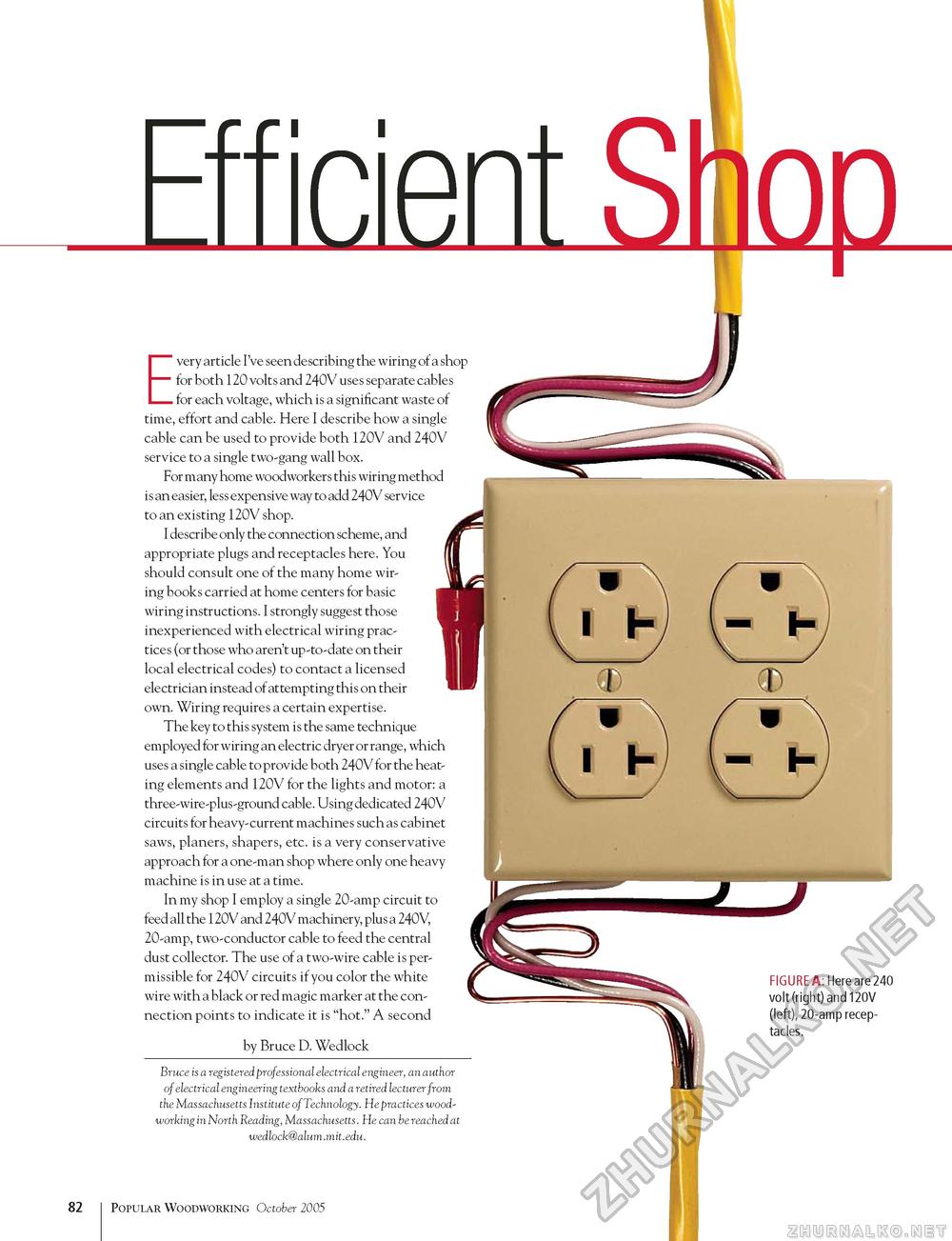Popular Woodworking 2005-10 № 150, страница 86
82 Every article I've seen describing the wiring of a shop for both 120 volts and 240V uses separate cables for each voltage, which is a significant waste of time, effort and cable. Here I describe how a single cable can be used to provide both 120V and 240V service to a single two-gang wall box. For many home woodworkers this wiring method is an easier, less expensive way to add 240V service to an existing 120V shop. I describe only the connection scheme, and appropriate plugs and receptacles here. You should consult one of the many home wiring books carried at home centers for basic wiring instructions. I strongly suggest those inexperienced with electrical wiring practices (or those who aren't up-to-date on their local electrical codes) to contact a licensed electrician instead of attempting this on their own. Wiring requires a certain expertise. The key to this system is the same technique employed for wiring an electric dryer or range, which uses a single cable to provide both 240V for the heating elements and 120 V for the lights and motor: a three-wire-plus-ground cable. Using dedicated 240V circuits for heavy-current machines such as cabinet saws, planers, shapers, etc. is a very conservative approach for a one-man shop where only one heavy machine is in use at a time. In my shop I employ a single 20-amp circuit to feed all the 120V and 240V machinery, plus a 240V, 20-amp, two-conductor cable to feed the central dust collector. The use of a two-wire cable is permissible for 240V circuits if you color the white wire with a black or red magic marker at the connection points to indicate it is "hot." A second by Bruce D. Wedlock Bruce is a registered professional electrical engineer, an author of electrical engineering textbooks and a retired lecturer from the Massachusetts Institute of Technology. He practices woodworking in North Reading, Massachusetts. He can be reached at wedlock@alum.mit.edu. Popular Woodworking October 2005 FIGURE A: Here are 240 volt (right) and 120V (left), 20-amp receptacles. |








